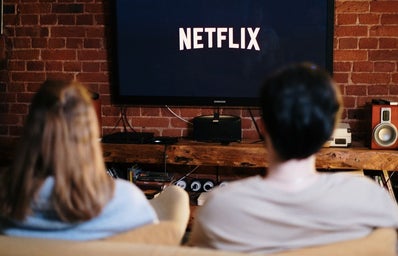After an 11-year long hiatus, the cult-classic sitcom Sarabhai Vs Sarabhai made its way back to our screens in 2017, this time via a digital streaming platform, Disney+Hotstar. The light-hearted comedy tells the story of an affluent Gujarati family and their eccentricities. While the show has garnered widespread popularity since its release in 2004, it would have been difficult to make a comeback on television. This is because our taste in shows has drastically changed in the past decade.
To put matters into perspective, the most popular sitcom on TV in 2017 was Kya Haal Mr. Paanchal. This show follows the life of one Kunti Devi who prays to God for a daughter in law with five qualities but finds herself in a lurch when she gets five ‘bahus’ with one special quality each. Is this premise regressive and stereotypical? Yes. Did the show get a large viewership? Also, yes.
The dearth of good quality shows on television has led to creators taking to the digital space to create content. Over the past few years “web-series” have become the new source of entertainment in India. You see, for a TV show to become popular it needs to cater to the mindset of a large number of viewers. This is not the case with a web series. Here directors have the option to structure the story in such a way that only a niche audience will be able to enjoy it. While a comedy like Taarak Mehta ka Ooltah Chashma is suitable for a family viewing experience, humor like that in Four More Shots Please! is meant to be appreciated by the average educated, upper-middle-class woman.
There is no obligation to create an epic 300-episode saga either. When it comes to the digital space, less is more. Writers have the opportunity to express themselves far more effectively because there is less pressure to drag one small plot point for the sake of TRP. Fortunately, women here do not spend hours trying to investigate who put chickpeas in the cooker!
For genres like horror, dystopia, and musicals to get noticed on television they have to be supplemented with generous amounts of family drama like in the case of the fantasy thriller Naagin. Web series do not need to maneuver around this fixed structure. Netflix’s Ghoul can choose to have supernatural elements while focusing on the fascist policies of the state.
Creators have also used the platform to talk about social issues. Unlike TV shows like Balika Vadhu where excessive dramatization is key, the messaging here is far more subtle. For instance, TVF’s Kota Factory focuses on the plight of engineering students and the crippling academic pressure faced by them without ever coming across as ‘preachy.’ Even those topics which are blatantly ignored on television because they are deemed inappropriate are dealt with in the digital space. A retelling of Romeo and Juliet, Romil and Jugal by ALTBalaji is the story of two guys in a same sex-relationship.
The diversity in storytelling has also led to more relatable characters on screen. People in web series talk and act like real people instead of mere caricatures. Instead of coming up with different combinations of the age-old saas-bahu stereotypes, web series have an assortment of characters from various walks of life. They have their own ambitions and imperfections and accurately mirror the kind of people we see in our daily lives even when they come from vastly different backgrounds.
Shows made for the internet also escape the watchful eye of censorship. Nudity and foul language are acceptable and common on streaming platforms and even used as a tactic by producers to make a show more popular. In a country where discussion around sex is taboo and pornography is banned, web series have also managed to fill up that void.
This is not to say that everything is hunky-dory in this sphere. A few weeks ago, Mumbai writer Balram Vishwakarma analyzed the representation in 50 popular web series. He found that while 58.47% of the protagonists belonged to upper castes, only 4.2.% were from backward castes and 11.02% from minority communities. In this lockdown, more and more people turned to the idiot box for accurate information and some much-needed entertainment. Unfortunately, they soon discovered that television was sorely lacking in both these aspects. Digital streaming platforms have witnessed a large increase in viewership in 2020. With more money and recognition coming in, the digital space has quickly evolved into a space where actors, writers, and directors can and must use their voices to affect real change.
As you may have guessed by now, I have spent unhealthy amounts of time binge-watching these shows. It would be unfair to end this article without sharing my wisdom. Here are a few of my recommendation based on your mood:
1. When you want to watch something ‘chill’ while eating dinner: Little Things on Netflix/ Panchayat on Prime Video.
2. Criminal dramas for when you need a plot twist: The Family Man on Prime Video and Special Ops on Disney+Hostar.
3. For when you know you will be scrolling Instagram half the time: TVF’s Tripling/ Yeh Meri Family.
4. When you’re in the mood for a serious weekend-long binge: Made in Heaven/ Bandish Bandits on Prime Video.
And finally,
5. The shows you need to watch to understand the memes: Sacred Games on Netflix and Mirzapur on Prime Video.


